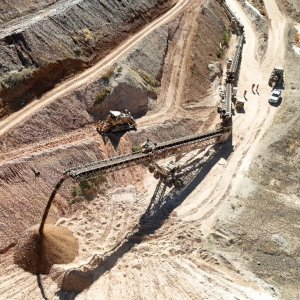Negotiating the Mining Royalty

STORY INLINE POST
The current Mining Law has regulated the mining sector since 1992, having been revised and edited in 1996, 2005, 2006, and 2014. These four reforms aimed to eliminate deregulation, obstacles that prevented the mining concessionaire from exercising its rights, and to implement mechanisms that simplified administrative aspects. The adaptation to the Energy Reform in Mexico was subject to similar processes. Although the Mining Law in force today could be refined, it is a modern law that meets the needs of the sector and international markets. This valuable tool is easy to use to promote the mining industry, and is supported by approximately 50 subordinate laws and pieces of legislation. These periphery criteria mainly center on environmental and tax concerns but also touch upon corporate operations, public health, labor law, oil extraction, and energy, to name a few.
Within changes to the mining regulatory framework two issues stand out as crucial factors in its development. Changes to the tax regime carried out in December 2013 were primary determinants, covering amendments to Federal Law in terms of civil rights and income tax. Secondly, reforms to the mining law that took place in August 2014 because of the Energy Reform contributed to molding the regulatory framework.
Changes to the tax regime consisted of eliminating tax deductibility on exploration expenses for locating and quantifying the value of new fields in the year these operations are carried out, translating to a 10 percent annual deduction. Moreover, three new laws were created. The first legal adjustment in mining was the Derecho Especial. This annual fee is determined by subtracting income tax deductions from the revenues obtained from the sale of extracted materials, excluding investments that are unrelated to exploratory mining, accrued interest and default interest, annual inflation adjustment, and contributions for the same activity, and applying a rate of 7.5 percent to the resulting number. The Miscellaneous Fiscal Tax Resolution clarified that investments in mining production and exploration would be 100 percent deductible. The Derecho Extraordinario is a second component consisting of an annual fee calculated at the rate of 0.5 percent of total revenues derived from gold, silver, and platinum sales. Thirdly, an additional duty for concessions that are not yet producing ranges from 50- 100 percent of the maximum additional fees established by the Mining Law. It was decided that these new tax collections would be used to improve social development, and the urban and environmental impact of mining on surrounding communities. The taxes would be distributed at a ratio of 20 percent to the Federation and 80 percent to the Fund for Regional Sustainable Development of States and Mining Municipalities. Mexico City would receive 62.5 percent, allocated to the municipalities wherein extraction took place, and the remaining 37.5 percent would be reserved for corresponding states.
Unfortunately, the fund distribution has not been favorably received by all communities, states, and municipalities because of limitations on the deduction of exploration expenses. The law states that funds raised for mining states and municipalities must be measured by the value of production not by the revenues in place. Therefore, funds obtained in a particular municipality may not necessarily be distributed fairly, which has led to some disagreements. The decision led to Mexican mining assuming the burden of new tax stipulations as well as lower sales prices, negatively affecting the industry. In fact, Mexico, lost competitiveness internationally in terms of attracting new investments in mining, and struggled to retain existing investors.
Regarding the amendments to the Mining Law derived from the Energy Reform, oil extraction, and electricity distribution to the public were labeled preferable mining activities. The changes included the possibility of refusal to grant mining concessions, or to limit the scope therein when oil extraction and electricity distribution and transmission were requested by the concessionaire. Gas regulations relating to coalfields were also removed from the Mining Law. It was expressly stated, at a constitutional level, that mining concessions could not grant preemptive rights for exploration or extraction of hydrocarbons except in the presence of coal, the regulation of which related to the Hydrocarbons Law.
The effects of changes to the Mining Act in connection with the Energy Reform can be divided into two divisions. The granting of mining concessions has been limited as the authorities that preside over the energy sector must determine the feasibility of both activities coexisting. However, the specifications of this technical study have not yet been officially published, such that each possibility should be reviewed on a case-by-case basis. Moreover, because of the elimination of gas regulations associated with coal, concessionaires were granted the right to obtain contracts directly for exploration and gas extraction. To date, contracts have not been awarded for coal mining, for which it is necessary to demonstrate the company’s financial solvency and technical, administrative, and financial aptitude.
Mechanisms to promote investment must be redirected toward generating real fiscal stimuli to boost the efficacy of exploration, which drives all mining activities. The social spending that mining companies conduct within mining communities should also be taken into account for tax purposes. Our goal, as lawyers that provide services to mining and energy companies is to understand the sector profoundly, as well as the legislative changes that are occurring. This should facilitate our distribution of effective and efficient advice to help them make adequate decisions.
























